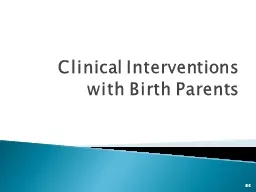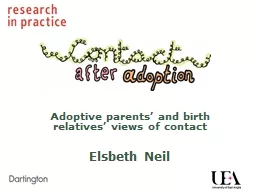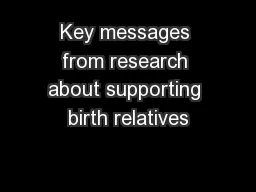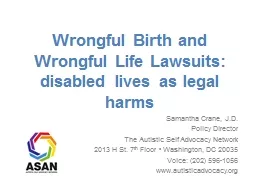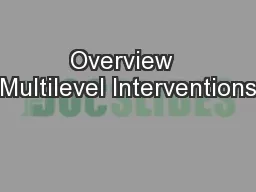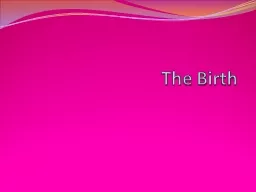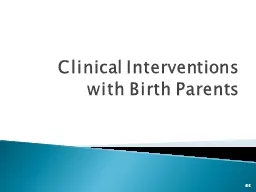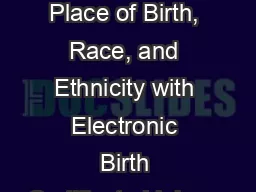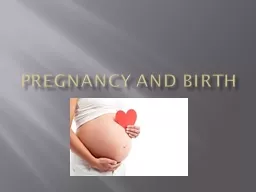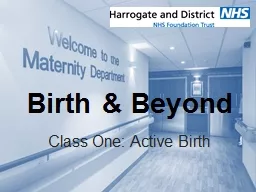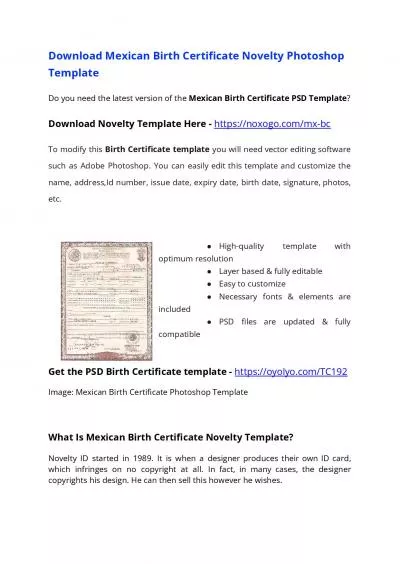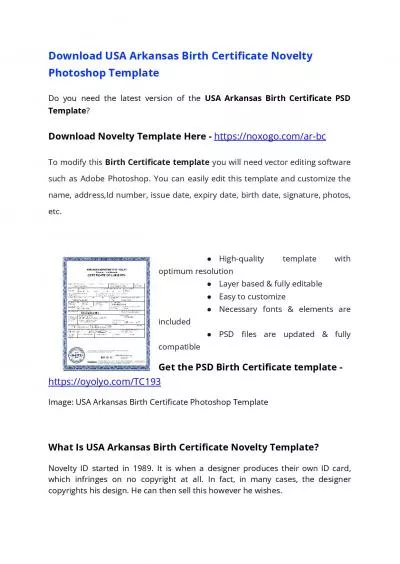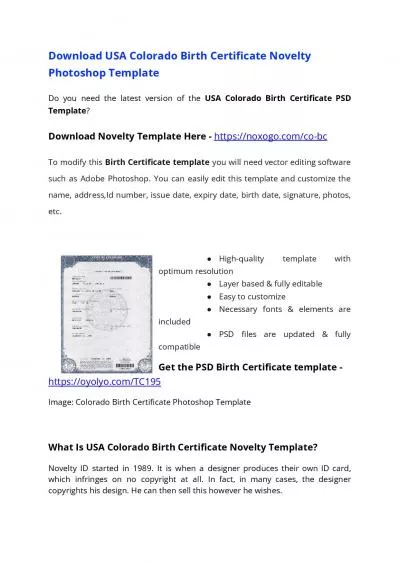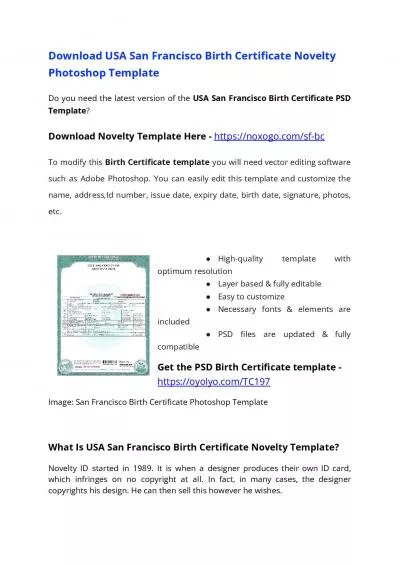PPT-Clinical Interventions with Birth Parents
Author : faustina-dinatale | Published Date : 2018-01-10
63 Handout 46 Joanne Clinical Interventions with a Birth Mother How did Joannes experience with adoption factor into the presenting issues What background factors
Presentation Embed Code
Download Presentation
Download Presentation The PPT/PDF document "Clinical Interventions with Birth Parent..." is the property of its rightful owner. Permission is granted to download and print the materials on this website for personal, non-commercial use only, and to display it on your personal computer provided you do not modify the materials and that you retain all copyright notices contained in the materials. By downloading content from our website, you accept the terms of this agreement.
Clinical Interventions with Birth Parents: Transcript
Download Rules Of Document
"Clinical Interventions with Birth Parents"The content belongs to its owner. You may download and print it for personal use, without modification, and keep all copyright notices. By downloading, you agree to these terms.
Related Documents

